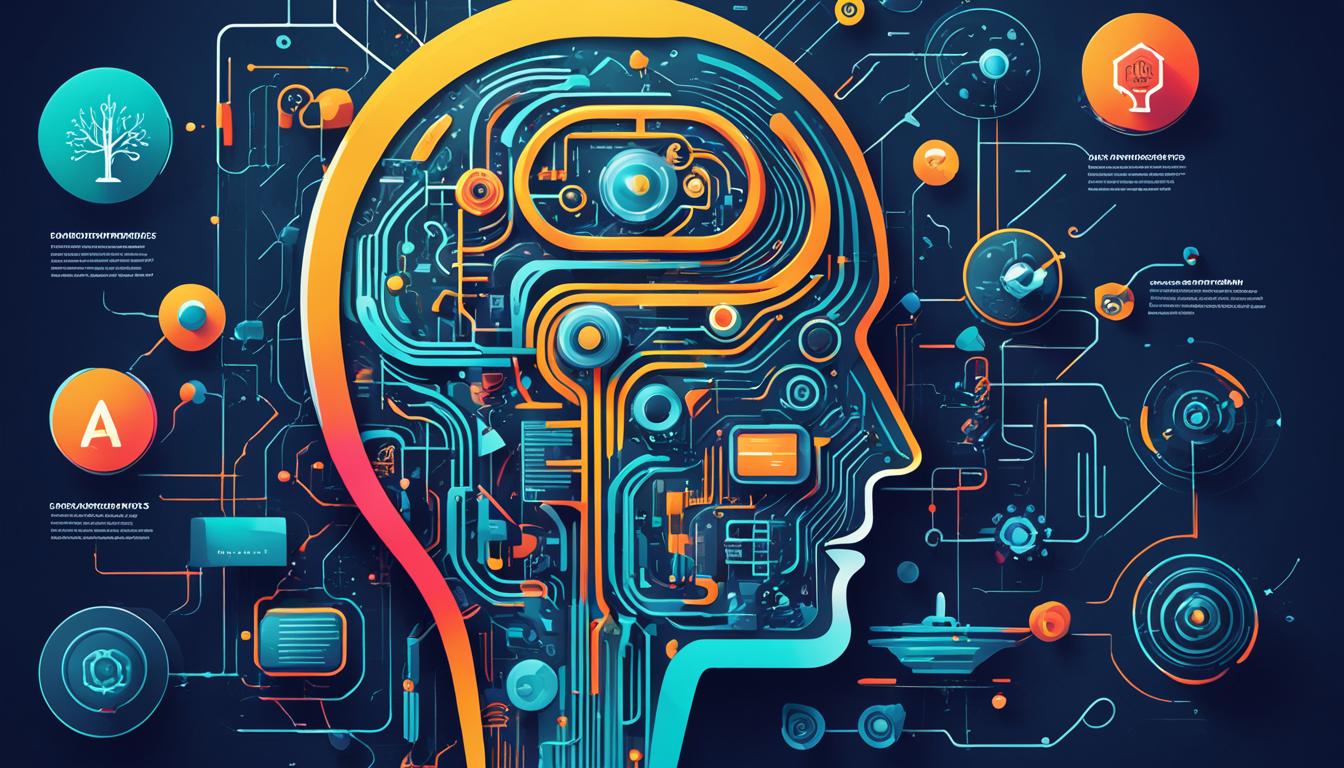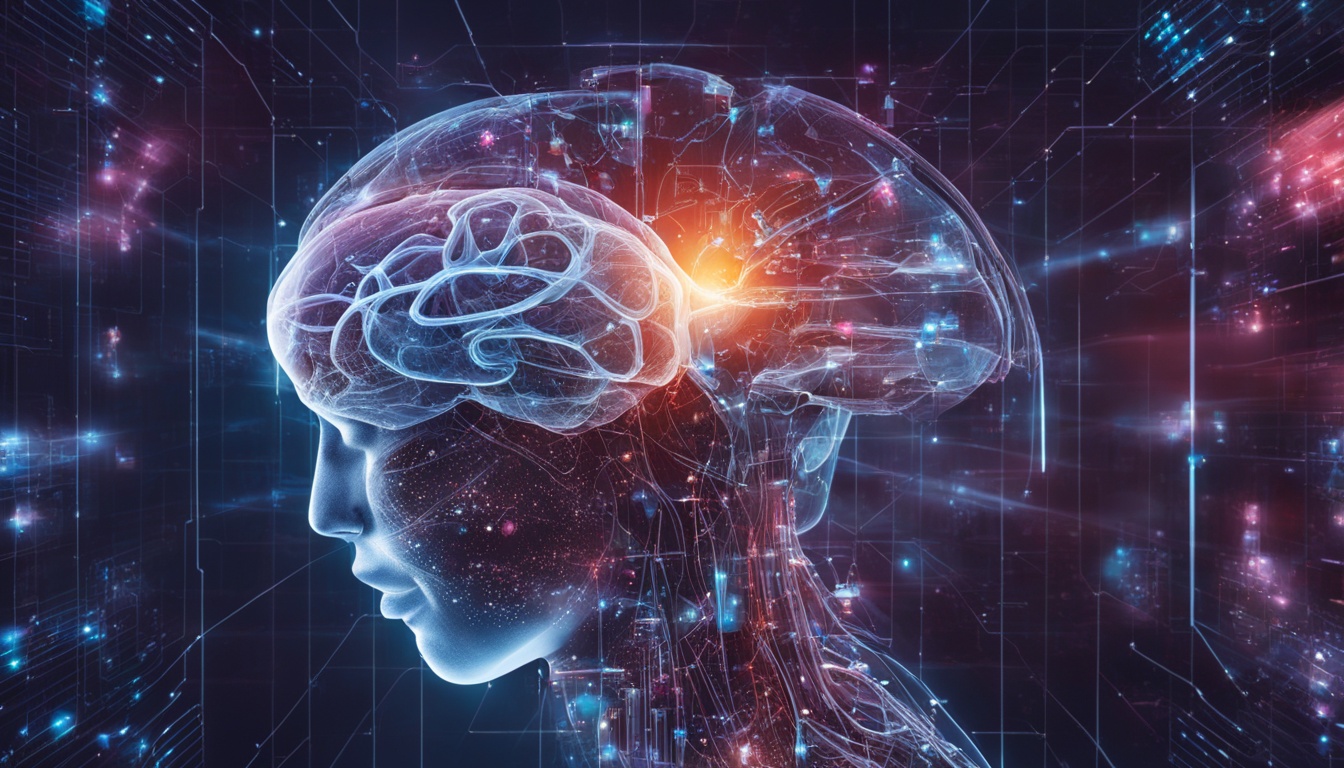AI has changed how we handle customer service, making chatbots a key part of this change. These AI-powered agents have grown from simple systems to advanced NLP models. They can now give personalized answers to complex questions.
Generative AI has brought a new level to NLP, making these agents more like humans. With these advanced NLP methods, companies can automate 80% of customer chats. This lets human agents focus on harder tasks and improve the customer experience.
This article looks at how NLP is changing in AI, focusing on the latest in sentiment analysis, machine translation, and text summarization. We’ll see how new NLP research, like transformer models and large language models, is changing AI customer service and more.
Key Takeaways
- Chatbots have evolved from simple rule-based systems to highly sophisticated AI agents using advanced NLP techniques.
- Generative AI has ushered in a new era of human-like interactions, enabling businesses to automate over 80% of customer interactions.
- NLP applications in AI go beyond chatbots, with advancements in areas like sentiment analysis, machine translation, and text summarization.
- Cutting-edge NLP research, including transformer models and large language models, is shaping the future of AI-powered customer service and beyond.
- Multilingual models and explainable AI are emerging as important considerations in the NLP landscape.
The Evolution of Natural Language Processing
The story of natural language processing (NLP) started in the 1950s with early machine translation attempts. These early efforts used rule-based systems. They depended a lot on knowing about language and made rules by hand. But, these systems found it hard to grow and handle the complex nature of language.
Then, the 1980s and 1990s brought machine learning to NLP. This change made systems learn from data, helping them get better at understanding and creating language. This move from rule-based NLP systems to machine learning NLP opened up new ways to process language.
Neural Networks and Deep Learning
The 2010s saw the rise of neural networks and deep learning in natural language processing history. These models could grasp complex language patterns and contexts. This led to big leaps in machine translation, understanding feelings in text, and summarizing texts. The growth of neural networks NLP systems has kept pushing what’s possible in NLP.
Advanced NLP Applications Beyond Chatbots
Chatbots are just one way we use natural language processing (NLP). This tech is also used in machine translation, sentiment analysis, and text summarization. It changes how we deal with language and interact with it.
Machine translation NLP has gotten much better, thanks to tools like Google’s Neural Machine Translation (GNMT) and OpenAI’s GPT-3. They can now translate languages more accurately, catching the subtle meanings we often miss. This makes talking across cultures easier and helps with teamwork.
Sentiment Analysis
Sentiment analysis NLP looks at text to figure out the feelings behind it, like happiness, sadness, or nothing special. It’s used a lot on social media, to understand customer feedback, and in market studies. This helps companies know what people think and feel about them.
Text Summarization
Text summarization NLP takes long texts and makes them shorter, keeping the main points. Researchers are working on making these summaries better, using extractive and abstractive methods. This tech is important for NLP applications beyond chatbots.
The world of natural language processing is always changing. NLP tech is now used in many areas, not just chatbots. It’s changing how we use and understand language every day.
Information Retrieval and Named Entity Recognition
Natural language processing (NLP) has changed how we search for information. It makes search engines better at understanding what we’re looking for. For example, Google’s BERT model now gets the context and meaning behind our searches.
Named entity recognition (NER) is another important part of NLP. It finds and labels entities in text, like people, companies, and places. This is key for finding information, building knowledge graphs, and indexing documents. It helps search engines match our searches with the right content.
Thanks to NLP, finding information is getting easier and more accurate. As NLP keeps getting better, we’ll see even more advanced search systems. This will make it simpler to find the information we need.
Speech Recognition and Natural Language Generation
At the core of today’s smart virtual assistants like Siri, Alexa, and Google Assistant are speech recognition NLP and natural language generation NLP. These technologies change how we talk to machines. They make our interactions with technology smoother.
Speech recognition NLP turns what we say into text that computers get. Natural language generation NLP then makes the computer respond like a human. This back-and-forth makes AI-powered tools like Siri and Alexa feel more like friends.
Thanks to ongoing improvements in speech recognition NLP and natural language generation NLP, virtual assistants are getting smarter. We’ll soon see even more natural ways to talk to our digital friends. This will make the line between humans and machines even fuzzier.
Natural Language Processing in Healthcare
Artificial intelligence (AI) is growing fast, and natural language processing (NLP) is a key part of it in healthcare. NLP healthcare applications help analyze huge amounts of medical records, literature, and patient talks. This brings new insights that can make diagnosing easier, help plan treatments, and better patient care.
NLP medical records use deep learning to predict how patients will do based on their health records. By looking at important data in clinical notes, NLP finds patterns and risks that are hard to see. This helps doctors make better choices.
NLP clinical notes also help with making diagnoses and planning treatments. They go through unorganized clinical notes to find key info like symptoms, medicines, and test results. Then, they give this info to doctors in a clear way they can act on.
NLP in healthcare isn’t just for patient data. It also looks at medical literature. By automatically pulling insights from research papers and studies, NLP keeps doctors updated with new discoveries. This leads to smarter decisions and better care for patients.
Cutting-Edge NLP Research
Natural language processing (NLP) has seen huge leaps forward lately. This is thanks to the creation of transformer models NLP and models like BERT NLP, GPT-3 NLP, and T5 NLP. These new models have set high standards in tasks like machine translation and text summarization.
The Transformer architecture, introduced in 2017, has changed how NLP models work with text. It lets them process text in parallel and understand long sequences better. BERT NLP, made by Google, has been a big deal. It uses bidirectional training for Transformers, which has greatly improved text context understanding.
GPT-3 and T5
GPT-3 NLP, a huge and powerful language model, is another big step forward in state-of-the-art NLP research. Made by OpenAI, it shows amazing text generation skills, almost like a human. T5 NLP, from Google Research, also builds on Transformer models. It treats different NLP tasks as text-to-text transformations.
These advances in transformer models NLP, BERT NLP, GPT-3 NLP, and T5 NLP have expanded what’s possible in NLP. They also make language models more understandable, scalable, and versatile. As state-of-the-art NLP research keeps moving forward, these technologies could change many areas in big ways.
Multilingual Models and Explainable AI
NLP technologies are getting better, and researchers are looking into new areas. They’re focusing on multilingual models and explainable AI. Models like Facebook’s XLM-R and Google’s mT5 can understand and create text in many languages. This helps break down language barriers and makes talking across languages easier.
These models use big datasets to learn about different languages. This lets them give accurate translations and help with global work together.
There’s also a push to make these complex algorithms more clear and open. Explainable AI (XAI) for NLP aims to make how these models work clear to people. Tools like LIME and SHAP show how the models make their predictions. This helps users trust and use these interpretable NLP models better.
The mix of multilingual NLP models and explainable AI is very promising. It’s useful in many areas, like machine translation, understanding feelings in text, summarizing text, and finding information. By using multilingual NLP models and explainable AI NLP together, we can make NLP tools more accurate, reliable, and easy to use for everyone around the world.
Ethics, Bias, and Fairness in NLP
Natural Language Processing (NLP) is getting more advanced, but we must tackle ethical issues and biases. NLP bias can make these systems unfair and unequal. This happens because the training data often has its own biases.
Researchers are finding ways to spot and fix these biases. They use adversarial training and debiasing algorithms. Their aim is to make sure NLP fairness is key. They want these systems to be fair and ethical for everyone.
Dealing with ethical NLP is hard because language is complex and human communication is nuanced. Biases can be hidden and tricky to find. But, it’s crucial to keep working on this. NLP is used in important areas like healthcare, jobs, and justice.
As NLP grows, it’s vital that those working on it focus on ethics and fairness. This way, NLP can help everyone, no matter who they are or where they come from.
Conclusion
Natural language processing (NLP) has grown a lot since its early days in chatbots. Now, it helps with machine translation, understanding feelings in text, making summaries, and finding information. This growth has made NLP very useful in many areas.
Research in new models, understanding many languages, making AI explainable, and reducing bias is pushing NLP forward. This is making big changes in healthcare, law, finance, education, and social media.
As NLP keeps getting better, experts are working on fixing data quality, making it easier to understand, reducing bias, and using less resources. These efforts show that NLP’s future is very promising. It could change how humans and machines work together in many areas.
The future of NLP looks very bright. By using the latest technologies like transformer models and handling many types of data, we can make NLP better. This will help make NLP more ethical and responsible, changing society in big ways.





